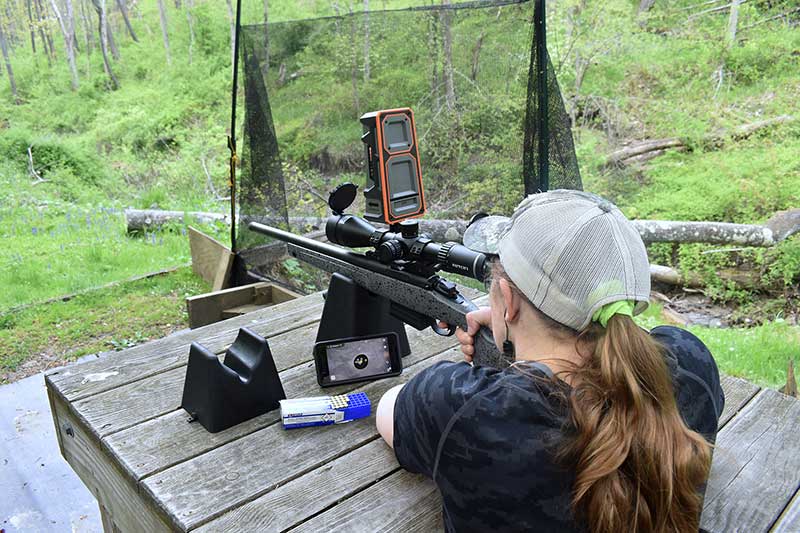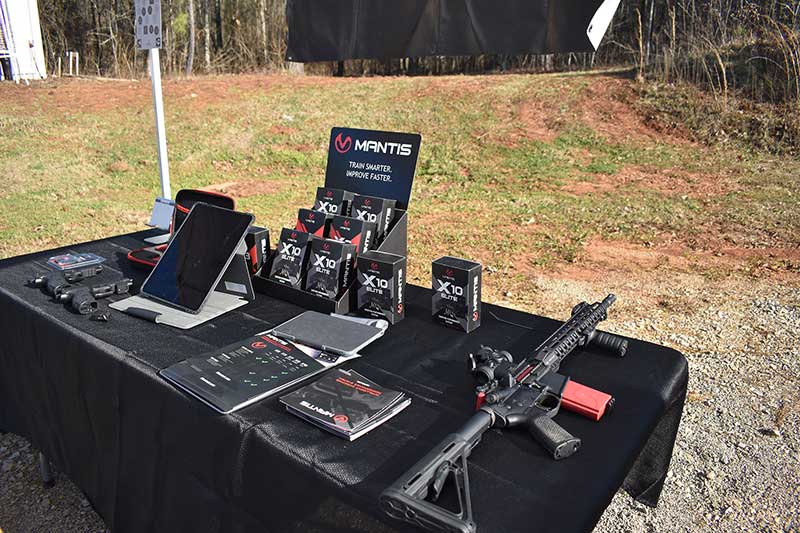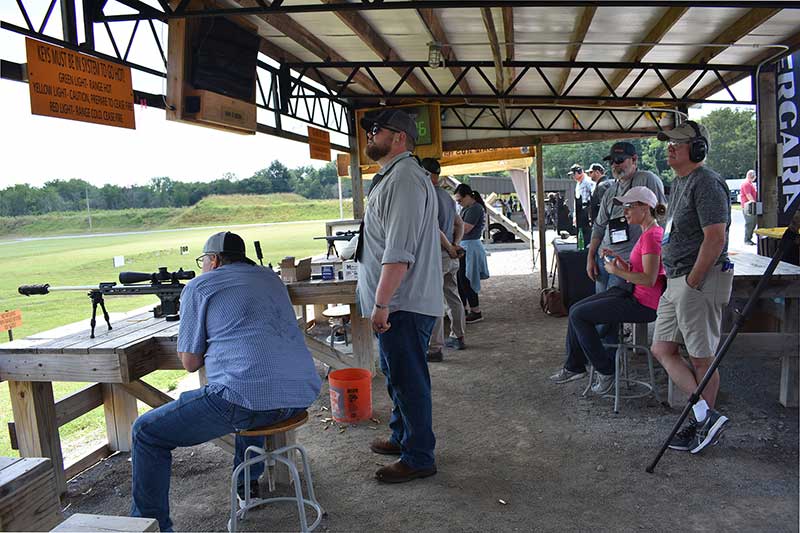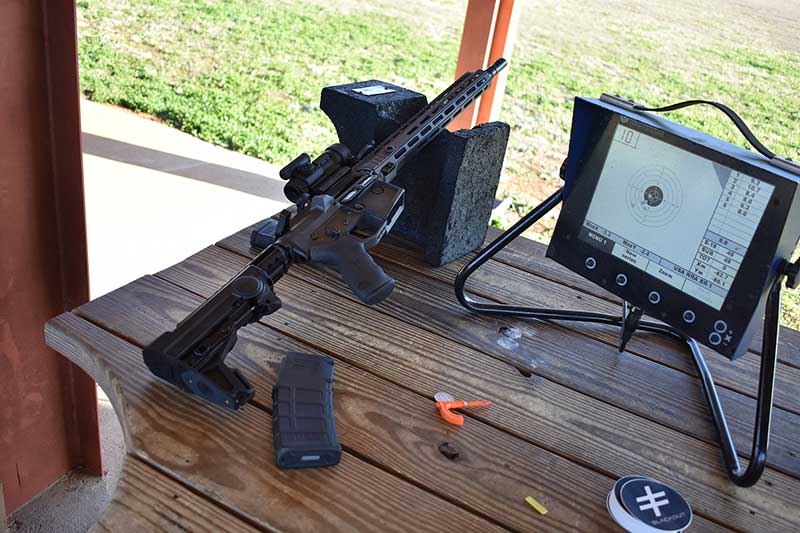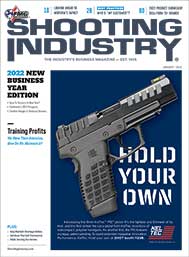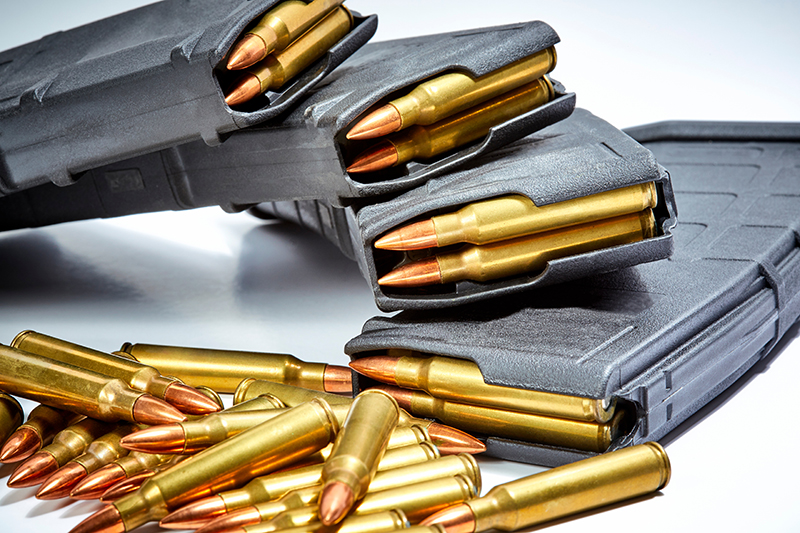The Digital Age
Does Technology Have A
Place In Stores & Ranges?
I’ve heard it dozens of times before. “That’s not how we used to do it…” Have times really changed? No matter how archaic an object, some part of it will have been an improvement, or attempted improvement, on what came before.
Firearms and ammunition are more accurate. New materials make frames lighter. Some scopes even communicate with a rangefinder to adjust your aiming point for you. How much is too much? This is a question no one knows the answer to though it’s foolhardy to deny the advantages technology has brought. More ethical shots on game, advances in self-defense and training tools have made discerning users more responsible firearm owners and more accurate shots.
Benefit: Elevating Marksmanship
While it’s largely up to consumers and firearm owners to take these steps on their own, it can be valuable for dealers and ranges to offer technology for either purchase or use that helps consumers meet their end goals.
If the goal is to improve marksmanship, stocking training tools like the Mantis X10 Elite may be prudent. This system works with rifles, pistols, shotguns and bows to analyze shooting in real-time. An accompanying app allows the user to work through both dry-fire and live fire drills to improve accuracy. This device enables people to practice and learn at home and on their own. Though nothing replaces official training, it’s a great way for people to hone their skills and in light of the current pandemic, to do so in the comfort of their own home.
”In an age where content is king and the sharing of experiences through media is so important, technology not only increases efficiency on the range but provides a new avenue for others to promote 2A and shooting in general.“
Mantis isn’t the only high-tech training system on the market. The SCATT system uses a camera to record movement and allows users to print out scaled down targets and shoot for score on recognized targets. The SCATT tracks your movement as the Mantis does, but provides more data points and opportunity for analysis. The Mantis in turn provides more real time feedback and instruction. SCATT is far more expensive than a Mantis system. Some gun clubs, usually those aimed at serving competition shooters, have invested in loaner units that members can use on the property.
Value-Added Option For Range Members
This presents an interesting idea for ranges — incorporating technology into member benefits or into the ranges themselves. With typical outdoor ranges, persons need to call a ceasefire to go downrange and examine targets. Shooting on paper to sight in, especially at distances beyond 50 yards, requires a spotting scope or some other way to see shots to make adjustments.
Longshot Target Cameras offers a solution to this problem. Users set up a camera in front of the target and connect to an app for a live video feed of the target. This allows users to take photos and videos, watch what transpires on range and to mark shots with not only different numbers but colors, too. This is useful for load testing, multiple shooters and more. The portable system is wireless and different models are available for various distances. The Longshot Marksman is effective out to 300 yards while the LR-3 works out to 2 miles.
In an age where content is king and the sharing of experiences through media is so important, technology like this not only increases efficiency on the range but provides a new avenue for others to promote 2A and shooting in general. Electronic targets transform individual sports into ones enjoyable for spectators. The Civilian Marksmanship Program (CMP) has embraced this technology, offering benches and live screens of KTS targets in the Gary Anderson Competiton Center and air rifle range. CMP also has a 100-yard sight in range featuring KTS targets at its Camp Perry headquarters.
Where the technology really shines is in matches across the country and at the CMP’s Talladega Marksmanship Park, a state-of-the-art facility with electronic targets out to 600 yards. CMP does require range visitors to qualify on a 100-yard electronic target before moving to those further away. Electronic pistol targets are also available.
“Consumers are looking for ease of use and ways to preserve the information they gain, whether it be ballistics data or a picture of an impressive target.”
The Downside
Electronic targets are something ranges and gun clubs have only recently begun to experiment with. Some ranges have purchased their own sets of electronic targets for member use, while others don’t supply them but allow members to store them. Perhaps the largest concern, depending upon the target type and manufacturer, is a shooter accidentally striking wires, microphones or tech, making for a potentially expensive replacement.
This is one of the reasons why Tony Shankle, CEO of Strategic Edge Gun Range in Chapel Hill, Tenn., hasn’t integrated electronic targets at his facility.
“It didn’t impress me at all. It wasn’t something I thought would survive the day-to-day of a commercial gun range,” he noted. “They may be great during a match, where you have a very controlled situation and you have people shooting supposedly on target all the time, most people can do that in a match. But when you get in a commercial situation where you don’t have control over every single bullet that’s going downrange, they’re going to hit target frames, cut wires.”
Shankle recognizes electronic targets have come a long way since his first experiments with them and for controlled settings they’re great, but for a commercial gun range, they may not be the best option due to the wide array of member skills and number of things that can go wrong.
Strategic Edge is anything but anti-tech, equipped with a custom 4K wireless target system powered by solar panels. High-definition cameras send signals from the range to the clubhouse and computer to eventually show up on TV displays on the long-distance rifle range. Similar to the Longshot system but lacking the content sharing and ability to zoom and mark shots from a mobile device, the cameras allow shooters to see splatter on steel. While some will go downrange to paint steel, other members of the private range will never venture past the firing line during their shooting session.
Paper & Cardboard No Longer Enough?
Shankle noted like any tech, people are beginning to get used to electronic targets and similar systems.
“They don’t consider them a luxury item … they consider them a necessity,” he observed.
Consumers, shooters and reloaders have also come to expect greater precision in equipment and data collection as ballistic calculators are available on any smartphone. LabRadar, for example, has taken chronographing to the next level, utilizing Doppler radar to obtain projectile velocities of rifles, shotguns (slugs only), handguns, pellet guns, BB guns, bows and arrows and more.
A typical range trip doesn’t just include a paper target and cardboard anymore. Consumers are looking for ease of use and ways to preserve the information they gain, whether it be ballistics data or a picture of an impressive target.
What Does This Mean For Dealers & Ranges?
There’s risk involved with everything, and it’s important to understand what your customers are looking for. Are they dedicated marksmen looking to improve or weekend plinkers? Do they just like the sound of hitting steel? Do they care where their shots go? Regardless of if you incorporate tech into your offerings, it’s important to keep an eye on what is happening within the industry and how something as simple as “going to the range” has changed.
More expensive options — like SCATT ($749–$1,899 MSRP) or LabRadar ($559.95 MSRP) — might be opportunities to offer more to members on a loaner basis onsite. Products like Mantis can be easily stocked, giving consumers a way to use the gun they just bought from you when no ammunition is available.
What technology advancements do you see capturing the interest of your customers? Let the SI team know: comments@shootingindustry.com.


